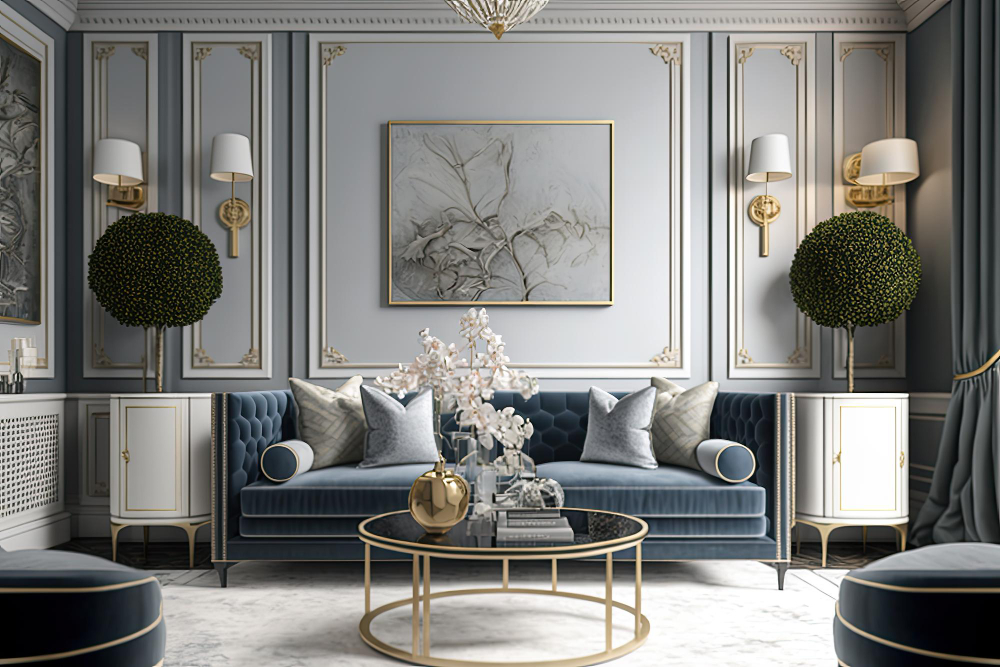Natural and Normal: Best Eco-Accommodating Home Style Textures
In a world progressively aware of supportability, eco-accommodating home style has turned into a critical pattern. Besides the fact that it adds to a better climate, however it likewise upgrades the stylish allure of insides. Among the different components of home style, textures assume a urgent part. Picking the right eco-accommodating textures can have a significant effect in making a maintainable and snappy home. This article investigates probably the best natural and normal textures that are ideally suited for eco-accommodating home style.

The Significance of Eco-Accommodating Textures
Eco-accommodating textures are delivered utilizing processes that limit natural effect. They are produced using normal filaments, frequently developed without pesticides or engineered composts, and handled without destructive synthetics. These textures are biodegradable, decreasing landfill waste, and they frequently require less energy and water to deliver contrasted with manufactured textures. In addition, eco-accommodating textures are better for yourself as well as your family, as they are liberated from poisons and allergens.
Top Eco-Accommodating Home Style Textures
- Organic Cotton
Natural cotton is one of the most famous eco-accommodating textures. Not at all like traditional cotton, which is infamous for its weighty pesticide use, natural cotton is developed without destructive synthetics. This supportable cultivating practice safeguards the dirt and water as well as guarantees a more secure workplace for ranchers. Natural cotton is extraordinarily flexible and can be utilized for an extensive variety of home style things, including draperies, pads, and upholstery. It is delicate, sturdy, and accessible in different winds around and colors.
- Linen
Material is produced using the flax plant, a yield that requires insignificant water and pesticides to develop. This makes it an innately eco-accommodating texture. Material is known for its solidarity and sturdiness, pursuing it a great decision for home stylistic layout things that need to endure mileage, like decorative liners, napkins, and upholstery. It has a characteristic gloss and a fresh surface that adds a bit of tastefulness to any space. Cloth likewise has phenomenal dampness wicking properties, which makes it ideal for muggy environments.
- Hemp
Hemp is a profoundly practical harvest that develops rapidly and requires little water and no pesticides. The texture produced using hemp filaments is major areas of strength for extraordinarily strong, frequently contrasted with the strength of cotton yet with a more drawn out life expectancy. Hemp texture is flexible and can be utilized for an assortment of home style applications, including carpets, draperies, and pad covers. It has a characteristic, provincial appearance that adds a special appeal to insides. Furthermore, hemp texture mellow with each wash, turning out to be more agreeable over the long run.
- Bamboo
Bamboo texture is gotten from the mash of bamboo grass, a quickly developing and sustainable asset. Bamboo development doesn’t need pesticides or engineered composts, and it utilizes less water than cotton. The texture delivered from bamboo is delicate, breathable, and has a characteristic sheen. Bamboo texture is additionally hypoallergenic and has antimicrobial properties, making it ideal for bedding, towels, and window hangings. Its extravagant feel and manageable creation settle on bamboo a top decision for eco-accommodating home style.
- Tencel
Tencel, otherwise called lyocell, is a texture produced using the wood mash of reasonably overseen eucalyptus trees. The creation interaction of Tencel is harmless to the ecosystem, using a shut circle framework that reuses water and solvents. Tencel is delicate, breathable, and biodegradable, making it an incredible eco-accommodating choice. It is frequently utilized for bed cloths, upholstery, and drapes. Tencel window hangings wonderfully and has a velvety vibe, adding a hint of extravagance to home insides.
- Jute
Jute is a characteristic fiber got from the jute plant, which flourishes in heat and humidities. It is quite possibly of the most reasonable regular fiber and is no doubt biodegradable. Jute is regularly used to make floor coverings, covers, and wall decorations. The coarse surface of jute adds a provincial and hearty component to home stylistic layout. It is exceptionally sturdy and can endure weighty people walking through, making it an optimal material for floor covers. Jute’s regular brilliant earthy colored variety supplements different stylistic layout styles, from bohemian to moderate.
- Recycled Fabrics
Reused textures are produced using post-shopper and post-modern waste, like plastic containers and material pieces. These textures assist with decreasing waste and the interest for virgin materials. Reused polyester, for instance, is produced using reused PET jugs and can be utilized for draperies, pad covers, and upholstery. It has the strength of conventional polyester yet with a fundamentally lower natural effect. Picking reused textures is a magnificent method for integrating supportability into home stylistic layout.

Ways to pick Eco-Accommodating Textures
While choosing eco-accommodating textures for your home, think about the accompanying tips:
- Actually look at Certifications: Search for certificates like Worldwide Natural Material Norm (GOTS), OEKO-TEX, and Fair Exchange, which guarantee that the texture meets explicit ecological and social rules.
- Consider Durability: Pick textures that are sturdy and will keep going quite a while. This diminishes the requirement for continuous substitutions, setting aside assets and cash over the long haul.
- Ponder End-of-Life: Decide on textures that are biodegradable or recyclable to limit their ecological effect toward the finish of their lifecycle.
- Support Moral Brands: Buy from brands and organizations that are focused on feasible practices and fair work conditions.

Conclusion:
Consolidating eco-accommodating textures into home stylistic theme is a strong method for adding to a more supportable future. Natural cotton, material, hemp, bamboo, Tencel, jute, and reused textures offer a great many choices that are both beautiful and ecologically dependable. By picking these normal and natural materials, you can make a lovely and sound living space that lines up with your upsides of supportability and eco-cognizance. Keep in mind, each little step towards maintainability counts, and picking the right textures for your house is an extraordinary spot to begin.

